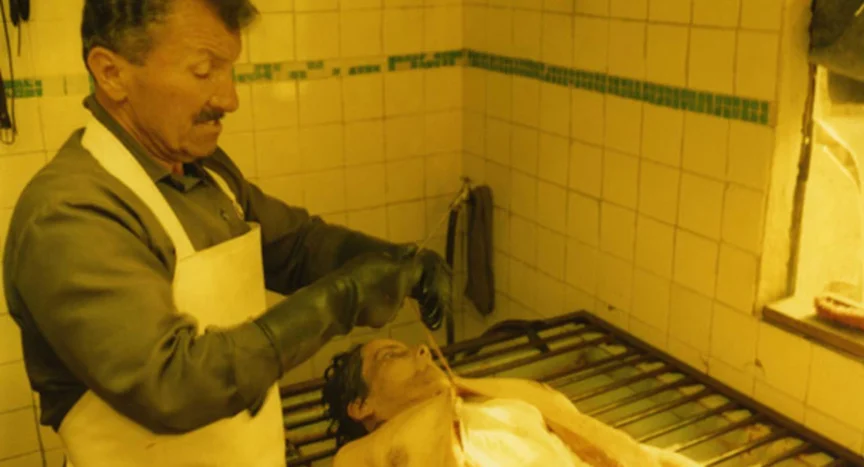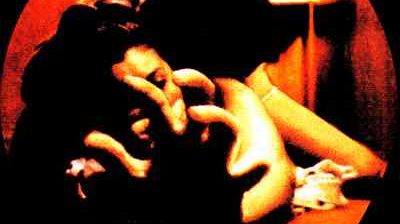Orozco the embalmer, The Documentary That Turns “Hostel” into a Fairy Tale
Think you’re brave for enduring horror movies? Proud of munching popcorn while the screen drowns in blood? Forget it. Orozco the Embalmer, by Japan’s Kiyotaka Tsurisaki, is a documentary without actors, scripts, or tricks. What you’ll see is real: death without sugarcoating. And a warning: your sleep might never be the same after watching.
Filmed in 2001 in El Cartucho, Bogotá’s most dangerous and forgotten neighborhood, the film follows Froilán Orozco, an embalmer who worked day and night among corpses. His mission: to restore dignity to abandoned bodies—victims of bullets, violence, and poverty. The camera trails him like a reality show… but one spawned from the depths of hell.
CINEMATIC ASPECTS: AN AESTHETIC OF DESOLATION
- NTSC-J Format: The analog video, with its muted color palette, dense grain, and low definition, isn’t just a technical limitation—it’s an artistic choice. It amplifies the atmosphere of decay and rawness, as if the medium itself refuses to “beautify” the unthinkable.
- Claustrophobic Framing: Tsurisaki shoots in tight spaces, using close-ups that force viewers to coexist with the dead. There’s no safe distance: the camera is an uncomfortable witness, almost an accomplice.
- No Music: Only the buzz of flies, knives slicing flesh, and Orozco’s whispers. This is an active silence, where reality is the sole narrative.
- Naturalistic Lighting: Fluorescent bulbs and grimy windows cast a cold, almost surgical clarity, stripping every detail of romance.
CRITIQUE: ART OR EXPLOITATION?
Orozco the Embalmer is a lightning rod for ethical debates:
- Voyeurism vs. Social Commentary: Does it expose El Cartucho’s misery to raise awareness, or revel in morbidity? Tsurisaki offers no answers—he shows without context, forcing viewers to confront their own complicity.
- The Corpse as Object: The film challenges documentary ethics. Is it right to film bodies without consent? To some, it’s desecration; to others, a memorial for deaths society ignored.
- Aestheticizing the Grotesque: Blending cinéma vérité and gore horror, Tsurisaki erases the line between reality and fiction. But here, blood isn’t SFX—it’s proof of a dehumanizing system.
- Orozco’s Legacy: His post-filming death adds tragedy. Was his work heroism or fatalism? The documentary doesn’t glorify him—it portrays a man trapped in a cycle of violence, as much a victim as the dead he tends.
WHO MADE IT?
Kiyotaka Tsurisaki, a Japanese photographer obsessed with mortality. After documenting corpses in wars and disasters, he ventured into Bogotá’s streets to film the unthinkable: death’s unfiltered brutality. His style echoes ’90s shockumentaries (like Mondo Cane), but without exoticism—here, horror is local, political, and unredeemed.
WHY IS IT LEGENDARY?
Because Orozco the Embalmer transcends cinema. It’s a descent into the abyss: some call it transgressive art; others, horror pornography. Banned, praised, reviled… its protagonist died soon after, a victim of the very violence he documented. The film doesn’t just record death—it exposes how poverty and neglect render life disposable.
NO COMPROMISES WARNING
Not for couples, friends, or anyone with a weak stomach. It’s a mirror of human misery that questions art’s boundaries. The spoiler? Tsurisaki obliterated them.
Dare to watch… or keep pretending “Saw” was the most extreme thing you’ve seen?
This documentary isn’t “watched”—it’s endured. Its power (and controversy) lies in that suffering. Tsurisaki doesn’t want you unscathed: he wants you to question whether the horror is onscreen… or in the world you ignore. Are you a viewer or an accomplice? The camera, like death, shows no mercy.






